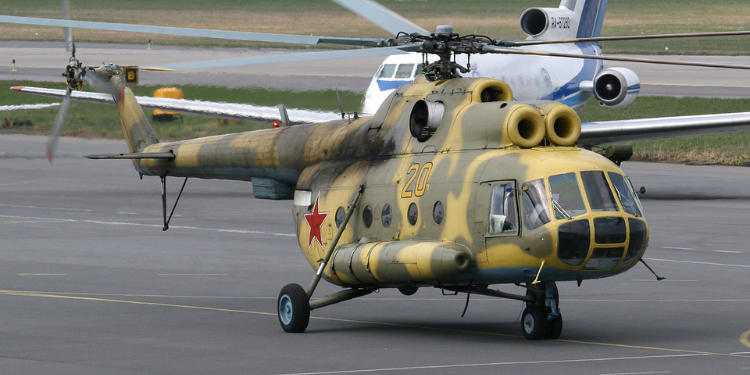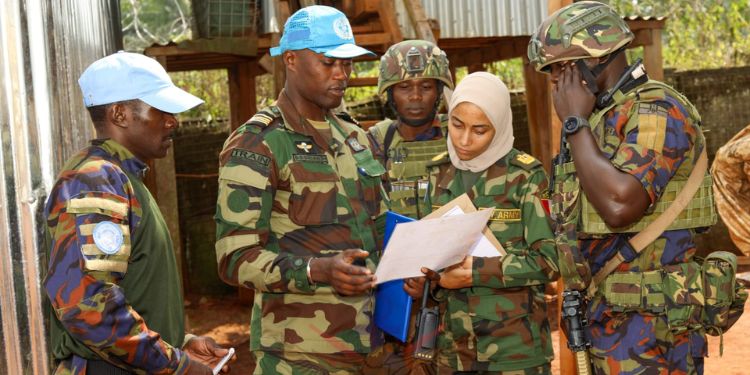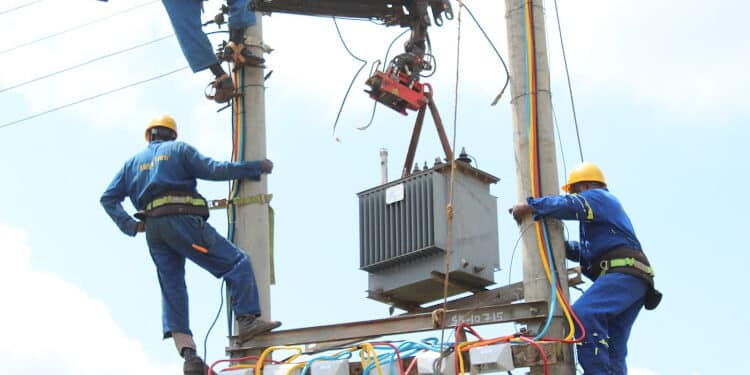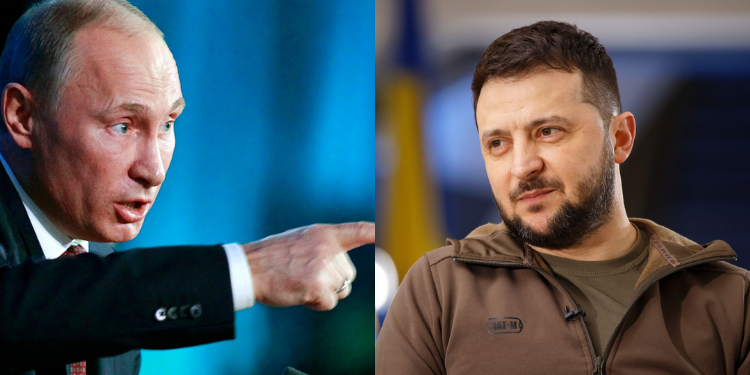Ukraine’s 59th Separate Assault Brigade, known as the “Sky Predators,” has successfully destroyed a Russian Mi-8 helicopter using a small FPV (First-Person View) drone, as per a new video footage released by the Ukrainian military.
The incident took place on September 29, 2025, near the village of Kotliarivka in Donetsk Oblast, a region currently under Russian occupation.
Ukraine Mi-8 Takedown
According to the Ukrainian military sources, the Mi-8 helicopter was flying at low altitude, likely trying to avoid radar detection.
It was accompanied by another Russian helicopter, a Ka-52, during the mission.
The Ukrainian drone operator, using a Shrike 10 FPV drone equipped with a PG-7M warhead, locked onto the Mi-8 and struck it directly in the cockpit area.
The drone was operated by a highly skilled pilot from the 59th Brigade, known by the call sign “Baltika.”
“Was it an accident? No, it was not. Our guys monitored that helicopter for more than a day, conducted long reconnaissance, identified a pattern in the Mi-8 crew’s flights, calculated their route and approximate flight time.”
The drone flew at ultra-low altitude and performed precise maneuvers to hit the most vulnerable part of the helicopter, resulting in a massive explosion that engulfed the aircraft in flames.
Casualties and Damage
Russian sources, including military bloggers, confirmed that the helicopter was critically damaged.
The explosion caused the fuel to ignite, and most of the personnel onboard were burned to death, with only two crew members, a flight engineer and a navigator, surviving the attack.
The young commander of the helicopter managed to make an emergency landing, but he and the rest of the crew did not make it out alive.
This tragic outcome contradicts earlier Russian media claims that the helicopter made a “controlled and safe landing.”
Ukrainian footage and eyewitness reports clearly show the helicopter in flames, crashing into the ground, and becoming completely inoperable.
Why Is This Important?
The Mi-8 is a Soviet-designed, twin-engine helicopter used for troop transport, cargo delivery, medical evacuation, and combat support.
It has been in service since the 1960s and is one of the most widely used helicopters in the world.
Each unit is estimated to cost between $6 million and $10 million (approximately Ksh775,440,000 to Ksh1.3 billion).
In contrast, the FPV drone used in this operation cost only around $500 (Ksh64,620).
This demonstrates how low-cost technology can be utilized to render expensive military equipment ineffective, thereby altering the balance of power on the battlefield.
This is not the first time Ukraine has used FPV drones to take down Russian helicopters, as in August 2024, Ukrainian forces destroyed a Mi-28 attack helicopter in Kursk Oblast using a similar tactic.
That operation was described as “a unique special operation in military history”.
The Role of the 59th Brigade
The 59th Separate Assault Brigade, part of Ukraine’s Unmanned Systems Forces, has become a key player in drone warfare.
Also Read: UK Responds After 7 Kenyans Win Case Proving British Soldiers Are Their Fathers
Their unit, the Sky Predators, specializes in using FPV drones for high-precision attacks.
The success of this operation was made possible by coordinated efforts between drone pilots, intelligence teams, and reconnaissance units.
Commander Robert “Madyar” Brovdi, who leads the Unmanned Systems Forces, shared footage of the strike and praised the team’s efforts.
“Whoever flies there ‘for a look’ be prepared. Do not give us any surprises from the air because it will cost you dearly.”
Russian Reaction
Russian media channels and bloggers have confirmed the loss but have tried to downplay the damage.
Some claimed the crew was evacuated safely, while others admitted that the helicopter was hit and destroyed.
Also Read: Russia Strikes Ukrainian Passenger Train Injuring Dozens
One Russian blogger who knew the pilot shared emotional details about the crew’s final moments, adding a sense of remorse to the tragedy.
As the war continues, such operations will likely become more common, proving that innovation and precision can sometimes outweigh brute force.
Follow our WhatsApp Channel and X Account for real-time news updates.












































































